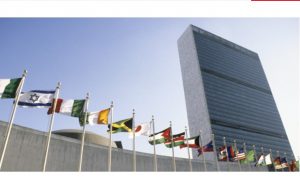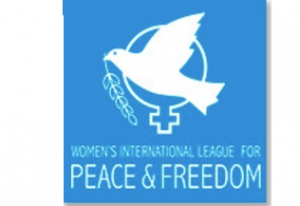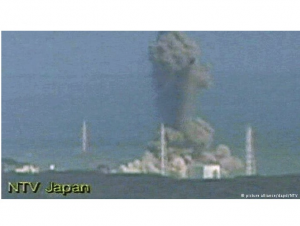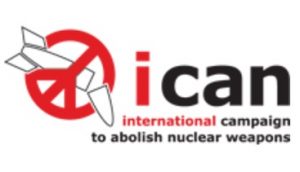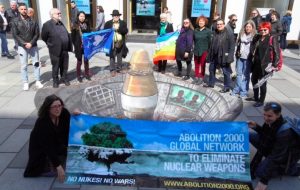FREE FLOW OF INFORMATION
An article from Rosario Net (translated by CPNN)
For the first time in Argentina, a unique meeting will be held that will bring together 5 Nobel Peace Laureates in one city. The reason: La PAZ. An initiative of the Foundation for International Democracy. VOYXLAPAZ is an action for the construction of a less violent world.

The meeting, on will include sessions, work panels and a public event that will bring together world peacebuilding activists along with leading exponents from diverse disciplines to raise awareness about the fact that peace can be promoted by ordinary people as well as Nobel Peace Prize winners and social activists.
FRIDAY JUNE 9
Panels with the 5 Nobel Peace Prize Laureates. Place: Rosario Stock Exchange.
9:00 “Education for Peace”. Rigoberta Menchú Tum
11:00 “Memory, peace and forgiveness”. Adolfo Pérez Esquivel
14:00 “Transparency, democracy and peace”. Oscar Arias Sánchez
16:00 “The role of women in peacebuilding”. Shirin Ebadi
18:00 “Work, democracy and peace”. Lech Walesa
The event is free subject to limited accreditation by room quota.
Accreditations (http://nannini.com.ar/acreditacion/paz/)
Panelists accompanying the Nobel Prize winners:
Emilio Pérsico, National Secretary General of the Evita Movement.
Dr. Facundo Manes, Neurologist, Neuroscientist.
Susana Trimarco, Mama of Marita Verón, president of the María de los Ángeles Foundation.
Rosario Lufrano, Journalist.
Marcelo Colombo, Protex.
Rafael Pérez Taylor, Director of Anthropological Research at UNAM.
Ramsés Vargas Lamadrid, Rector Autonomous University of the Caribbean
SATURDAY JUNE 10
15:00 Grand closing event at the National Flag Monument. Free admission.
With the live performances of:
Leon Gieco, Juan Carlos Baglietto, Jairo, Patricia Sosa, Peteco Carabajal, Hilda Lizarazu and Raúl Porchetto. Musical Direction and Artistic Production: Lito Vitale.
The five Nobel Peace Prizes will share a microphone with singers, athletes, exponents of the arts, culture, science and education.
(Article continued in the column on the right)
(Click here for the original version of this article in Spanish)
Where in the world can we find good leadership today?
(Article continued from the column on the left)
NOBEL PARTICIPANTS AWARDS:
Shirin Ebadi (Iran) Nobel Peace Prize 2003
Iranian lawyer and human rights defender. She was one of the first women to be a judge in her country and had to seek exile after the Islamic revolution. Ebadi founded the Association for the Support of Children’s Rights and provided free legal advice to persons accused of political, ideological and religious motives. She was awarded the Nobel Peace Prize in 2003 for her work on democracy and human rights, especially for women and children.
Rigoberta Menchú Tum. (Guatemala) Nobel Peace Prize 1992
Indigenous Guatemalan. She was a victim of discrimination and devoted her life to peacefully combating attacks on the indigenous population. She was awarded the Nobel Peace Prize in 1992 for her struggle against inequality and her role as an advocate for the rights of indigenous communities and women.
Óscar Arias Sánchez (Costa Rica) Nobel Peace Prize 1987
Costa Rican politician who assumed the presidency of his country in 1986, critical period for Central America due to the conflicts that were developed in countries like Nicaragua and El Salvador. He worked on structuring a peace plan for the region, known as the “Plan Arias,” signed by all Central American presidents on August 7, 1987. The consolidation of the peace process earned him the Nobel Prize in 1987 .
Lech Wałęsa (Poland) Nobel Peace Prize 1983
Polish politician and trade unionist. He was one of the leaders of the workers’ mobilization of 1980 and president of the union “Solidarity” during the communist period. Their struggle focused on improving the political and economic conditions of the working class. He was awarded the Nobel Peace Prize in 1983 for his work to solve the nation’s problems through negotiations and joint work without violence and won the presidency of Poland in December 1990.
Adolfo Pérez Esquivel (Argentina) Nobel Peace Prize 1980
Argentine activist, defender of human rights and the right of free self-determination of peoples; Defender of non-violence and of the peaceful struggle for justice and freedom. He is president of the Honorary Council of the Peace and Justice Service of Latin America, executive president of the Argentine Peace and Justice Service, the Provincial Commission for the Memory of Buenos Aires, the International League for the Rights and Liberation of Peoples, the International Academy of Environmental Sciences, of the International University Foundation of La Pau de San Cugat del Vallés (Barcelona), and of the Academic Council of the University of Namur, Belgium.
This is the way. Let’s start building PEACE. Step by step.
FOUNDATION FOR INTERNATIONAL DEMOCRACY
The Foundation distributes its efforts in 3 main areas of work:
-The design of the first Museum of Private Democracy in the world to be inaugurated in Rosario.
– Culture of Peace Program, which aims to generate social awareness about the importance of peacebuilding and the idea that peacebuilding is born of an individual decision and contributes to a collective construction.
– The struggle against contemporary slavery and similar practices: research, design and promotion of public policies and fieldwork.
Its president, Guillermo Whpei, was recently honored in Guatemala by the 1993 Nobel Peace Laureate Rigoberta Menchu Tum for “his impetus to place at the center of the world agenda the abolition of all forms of urban violence and contemporary slavery. Among the world’s leaders for peace.” Awarded by the Secretariat of Peace of the Presidency of the Republic of Guatemala, and the 2016 International Maya Award (Madrid).
